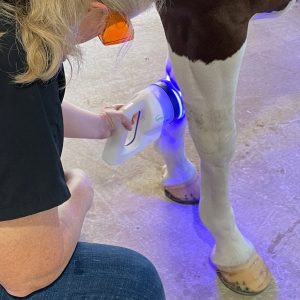Diagnosing Equine Cushing’s Disease
- Posted by Stacey Oke, DVM, MSc
Share:

Years ago, veterinarians relied on clinical signs to diagnose equine pituitary pars intermedia dysfunction (also known as PPID or equine Cushing’s disease). Laboratory diagnostic testing lagged far behind diagnosis via “clinical impression” made by the attending veterinarian, because blood test results were often unclear.
Download this special report to find out how PPID is diagnosed today.
Share

Written by:
Stacey Oke, DVM, MSc
Stacey Oke, MSc, DVM, is a practicing veterinarian and freelance medical writer and editor. She is interested in both large and small animals, as well as complementary and alternative medicine. Since 2005, she’s worked as a research consultant for nutritional supplement companies, assisted physicians and veterinarians in publishing research articles and textbooks, and written for a number of educational magazines and websites.
Related Articles
Stay on top of the most recent Horse Health news with












